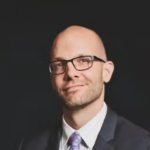
Posted on 30 Nov 2017
Many people come to their initial plastic surgery consultation believing they have to choose between having tummy tuck surgery or liposuction, and many times they discover that both procedures serve each other well.
As time went by and plastic surgery techniques were perfected, it became clear to surgeons that liposuction should be utilized during abdominoplasty or a tummy tuck to “fine tune” the silhouette and create the aesthetically appealing body contour that most individuals desire. The reverse can also be true. Many times, extensive liposuction can lead to skin laxity that can be addressed with a tummy tuck. Each person’s needs and goals are always unique, and customizing the surgical approach will typically lead to an improved result and a more satisfied patient.
For the patient, the decision-making process has much to do with the tummy tuck recovery experience. Patients must set aside an appropriate amount of time to fully heal, which includes at least a week and often more time away from work and regular activities. Adding liposuction to a procedure may or may not extend the recovery time, depending on the individual patient.
The typical abdominoplasty or tummy tuck surgery, is designed to reduce excess skin in the stomach that has developed as a result of pregnancy, weight loss, or other condition. It has become increasingly clear that individuals may well achieve a much better body contour by supplementing a tummy tuck procedure with liposuction.
Serving Salem and the surrounding areas, Dr. Keith Neaman is a licensed, board certified plastic surgeon. With his expertise and years of experience, Dr. Neaman can meet with you and determine which path is best for your situation. Contact Dr. Neaman at (844) 338-4445 and arrange your consultation appointment.

Dr. Keith Neaman
Dr. Neaman is a board-certified plastic surgeon that specializes in surgical body contouring. He prides himself on being on the cutting edge of plastic surgery. He takes an informative approach to each consultation, and through open dialogue and communication, he helps his patients decide on a treatment plan that meets their needs.

 English
English  Español
Español